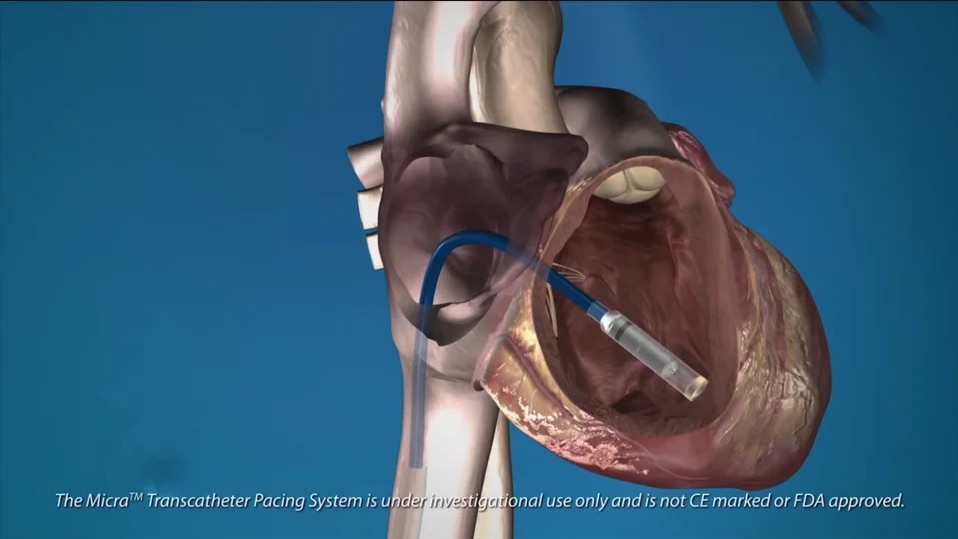
Well known for his skill in traditional pacemaker implantation, Dr. Hetal Bhakta is the only cardiologist and electrophysiologist in the Coachella Valley to offer leadless pacemaker installation. This device, a small self-contained unit inserted in the right ventricle of the heart, eliminates the need for wires, a pulse generator, or creation of a surgical pocket on the chest – the hallmarks of a wired pacemaker. Since there is no pocket, there is also no lump under the skin or leads attached to the muscle bed, which makes a leadless model both more cosmetically pleasing and less likely to cause patient discomfort.
While wired pacemakers do the job of regulating heart rate, leadless models eliminate the most common causes of pacemaker complications that affect 10% of patients. Long term problems with wired devices include vein obstruction, lead fracture, malfunction, tricuspid valve regurgitation and in many other risks associated with removal.
In contrast to the process of installing a traditional pacemaker where leads are fed through an incision in chest using catheters that take the lead to the heart wall, implementation of a leadless pacemaker is done through a catheter inserted in the femoral vein by making a small incision in the groin. The catheter, which is guided into place using an X-ray machine, helps place the pacemaker inside the right ventricle of the heart. After testing to make sure the unit is correctly attached and programmed, the catheter is removed and the incision site closed. The process only takes about 30 minutes.
The technology for leadless pacemakers was first proposed in 1970, but these devices have only recently become available on the market. There are two options; the Nanostim leadless pacemaker (St. Jude Medical, St. Paul, Minnesota) and the Micra transcatheter pacing system (Medtronic, Minneapolis). Both are dime-sized devices that last between 7 and 10 years, but the Nanostim is secured to the heart with active fixation while the Micra uses a timed fixation mechanism to affix it to the right ventricular endocardial surface.
Dr. Bhakta is one of the few cardiologists in the country trained to use the Medtronic product, which he uses right here in Southern California where he is the exclusive user. Released in 2016, the Micra is 93% smaller than most traditional pacemakers and is about as large as a vitamin capsule. It is less invasive to install and self-contained.
Information from the pacemaker in action can be sent to your clinic with a smart phone app. This remote monitoring capability allows Dr. Bhakta to quickly detect abnormal heart rhythms and device problems which results in fewer hospitalizations and increased quality of life.
Wired pacemakers are competent, long lasting coveted products but the leads can develop problems over the years, especially in older patients. During installation, there is the risk of vascular damage, bleeding, cardiac perforation, pneumothorax, and dislodgment. Long term, the units malfunction, obstruct veins, and lead to tricuspid valve regurgitation and other risks.
Exciting as leadless technology is, not all patients are good candidates for wireless products. The device is only available to patients with slow heart rate (bradycardia) in need of single chamber ventricular pacing (VVIR.) Those who cannot use them include patients with:
If a pacemaker is in your future, talk to Dr. Bhakta about whether a leadless pacemaker is appropriate for you. Call for an appointment at (760) 883-1600.
Our knowledgeable and courteous staff will help set up a consultation for you, schedule surgical procedures, discuss your insurance, and answer any questions you may have.


